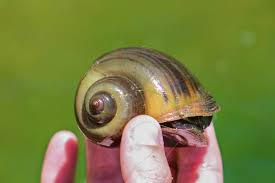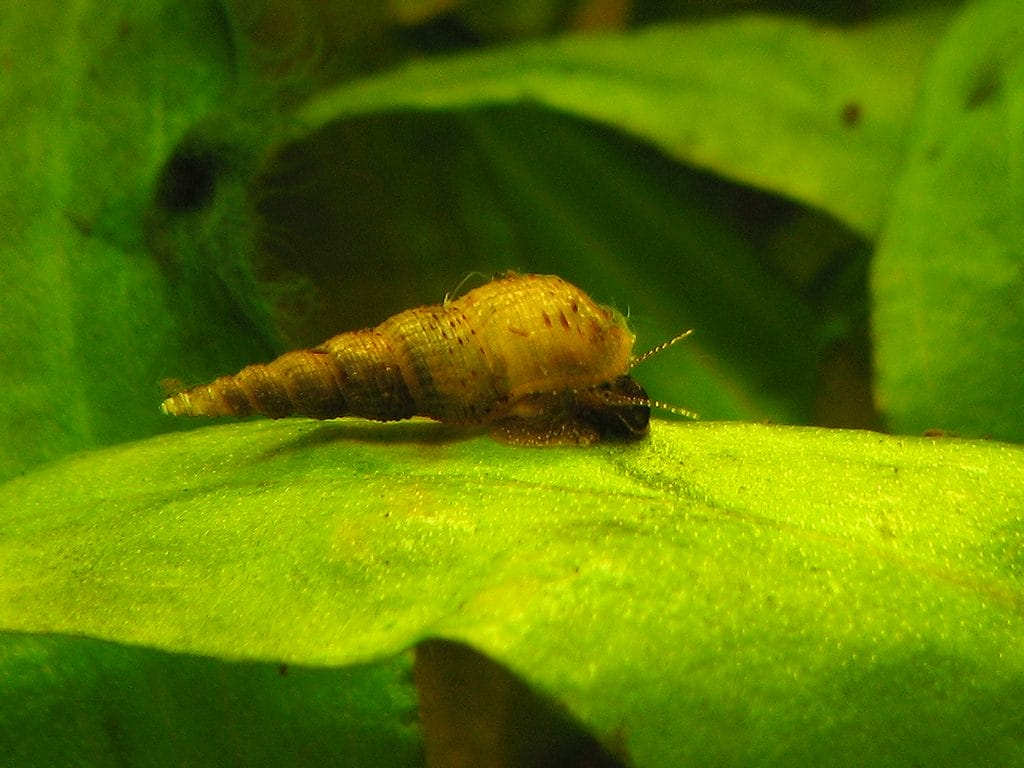
A Comprehensive Introduction to Pomacea Snails

Pomacea snails are often called apple snails. They are interesting freshwater snails that many scientists and aquarium lovers like. These snails come from South America.
They are known for being large, having unique breeding habits, and looking very striking. Their beauty makes them popular in the aquarium trade. However, they are also tough and can adapt well. Because of this, they have become an invasive species in many places around the world. This can cause significant damage to crops and ecosystems.

Read More : 18 Types of Freshwater Aquarium Snails You Should Have
Understanding Pomacea Snails
The term “apple snail” refers to a group of snails, not just one kind. These snails belong to the genus Pomacea and have over 100 different species. They come in various sizes, colors, and patterns. You can easily see them by looking for their big, round shells. These shells can be brown, yellow, or green, often with stripes or spirals.
Apple snails are found in warm areas of South America. They can live in water with low oxygen and even on land for a short time, thanks to their unique bodies that have both gills and lungs. This help them adapt to different places. Sadly, they can also do well outside their home areas.
Characteristics and Varieties
Pomacea snails belong to the Ampullariidae family and fit into the genus Pomacea. This genus has many species known for their strong shells. These shells have a special structure, called an operculum, that closes tightly and keeps them safe from predators. It also helps them keep water inside when they are not in water.
One of the most famous species is the channeled apple snail (Pomacea canaliculata). This snail gets attention because it can be invasive. It has noticeable spiral grooves on its shell and is a big problem for farms, especially in areas where rice is grown.
There are other well-known species too, like the spike-topped apple snail (Pomacea diffusa) and the island apple snail (Pomacea maculata). They all have different sizes, colors, and homes, but one thing they have in common is that they lay bright pink egg masses above the water.
Significance in Ecosystems
While Pomacea snails are key to freshwater ecosystems in South America, they can upset the balance when they are brought to new areas. The channeled apple snail (Pomacea canaliculata) is on the list of the 100 World’s Worst Invasive Species by the Invasive Species Specialist Group. This shows how harmful invasive species can be.
These snails eat a lot of aquatic plants. This behavior can change the structure and variety of life in their new habitats. When they eat through native plants, they create empty spaces. Fish and other water animals that rely on these plants for food and shelter are affected.
Additionally, Pomacea snails breed very quickly. In places where they have no natural enemies, their numbers can grow fast. This growth increases competition with native species. It can harm the health and stability of the entire ecosystem.

Beginner’s Guide to Keeping Pomacea Snails
Keeping Pomacea snails, also known as apple snails, in your home aquarium can be a great experience. They are gentle, move gracefully, and have colorful shells that make them beautiful to watch. However, you need to know what they need to stay healthy and happy.
To care for your apple snails well, you should set up the right habitat, choose good tank mates, and give them a balanced diet. Learning about their care will help you protect these interesting snails and also your other fish and plants in the tank.
Essential Equipment and Resources
Before you start keeping apple snails, it’s important to get the right equipment. Luckily, most of these items can be found easily in the aquarium trade. You need a spacious tank because these snails can grow big. Pick the tank size based on the type of snails you want and how many you plan to keep.
A secure lid is crucial. Apple snails are curious and might try to escape. Keep a lower water level in the tank. This gives them enough air to breathe. Besides a filter and a heater for the water, think about adding a substrate like sand or fine gravel. This will let the snails burrow and explore.
It’s also good to provide hiding spots, like caves, rocks, or driftwood. This helps the snails feel safe and makes their new home more interesting.
Step 1: Setting Up the Perfect Habitat
Creating a good home is very important for your apple snails. It helps them be happy and live a long time. You want to copy their natural surroundings. Make sure there is enough space in the tank for their size and for growth in the future. Use sand or fine gravel for the bottom. Make sure to avoid sharp gravel that can hurt their soft shells.
Keep the water clean by using a good filter and changing water regularly. The pH should be between 7.0 and 8.0. The water should have a hardness of 5 to 15 dGH. Keep the water temperature between 72 and 82°F (22 to 28°C) with a heater that you can adjust.
Here is a quick checklist for a perfect home:
- Spacious tank with a secure lid
- Sand or fine gravel for the bottom
- Filtration system, heater, and thermometer
- Hiding places like rocks, caves, or driftwood
- Plants for food and decoration
Step 2: Selecting Your Snails
Choosing apple snails can be fun because there are many types and colors available in the aquarium trade. Before you decide which ones to get, it’s important to learn about different species and what they need. The Pomacea diffusa, also called the mystery snail, is a great option for beginners. It is peaceful and can adapt well.
Another favorite is the Florida apple snail (Pomacea paludosa). This native species is known for its beautiful striped patterns. When you buy snails, make sure to look for any signs of sickness, like cracked shells, being inactive, or not eating.
Don’t buy snails from crowded or dirty tanks. This can make it easier for diseases to spread to your aquarium. Instead, pick healthy and lively snails from a good source. This helps them stay well and fit right into your aquarium.

Care and Maintenance
Once you set up your apple snail habitat, you need to care for it regularly. Check the water conditions every week to make sure they are good. Change part of the water every 2-3 weeks to get rid of waste and toxins.
Look for any food that is not eaten. If food stays in the tank, it can rot and harm water quality. Apple snails are strong, but it’s still important to watch their behavior and health closely.
Feeding: What Do Pomacea Snails Eat?
Apple snails are mostly plant-eating snails. They eat algae, soft plant matter, and debris from the water. In the wild, they eat algae that grows on rocks and underwater plants. They help recycle nutrients in their habitat.
In an aquarium, you can give them different types of food. High-quality algae wafers made for plant-eating fish are a great main food choice. They also like blanched vegetables such as spinach, zucchini, and lettuce. These vegetables give them important vitamins and minerals.
Be careful not to overfeed them. Extra food that is not eaten can rot in the tank and hurt the water quality. Give them small amounts of food one or two times each day. Remove any leftover food within 24 hours to keep the tank clean and healthy.
Health: Recognizing Common Issues
Apple snails are usually strong and face fewer diseases than other fish, but they can still get sick. It’s important to know common health problems and see signs of illness early to keep them healthy. Shell erosion is a frequent issue for apple snails. This can happen because of bad water or not enough calcium in their food.
Signs to watch for are pitting, thinning, or color changes on the shell. Other health problems can include parasite, fungus, and bacteria infections. These issues may show up as tiredness, not eating, trouble breathing, or strange bumps on their body or shell.
If you see any of these signs, you should separate the sick snail and talk to a vet who knows about aquatic animals. Quick action and treatment can help a lot with recovery.

Conclusion
In conclusion, Pomacea Snails are interesting animals that help our water environments. To take care of them well, it’s important to know their needs, where they live, and how to keep them healthy.
By using the beginner’s guide and making sure they get the right food and health checks, you can keep your Pomacea Snails happy. They have special qualities that make them different from other water snails, adding great value to your aquarium.
If you plan to keep Pomacea Snails, this guide is a good way to start your exciting journey into this world. Discover the world of Pomacea Snails and make your aquarium experience better today!

Frequently Asked Questions
How to Manage Overpopulation in an Aquarium?
– Regularly look for bright pink egg masses above the waterline.
– Remove and destroy these egg masses to help control the population.
– Do not release snails or eggs into the wild.
– This can add to problems with invasive species.





